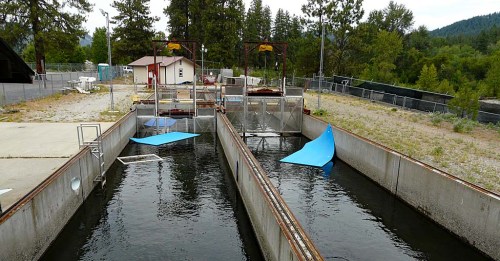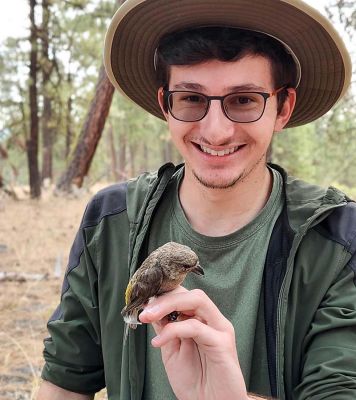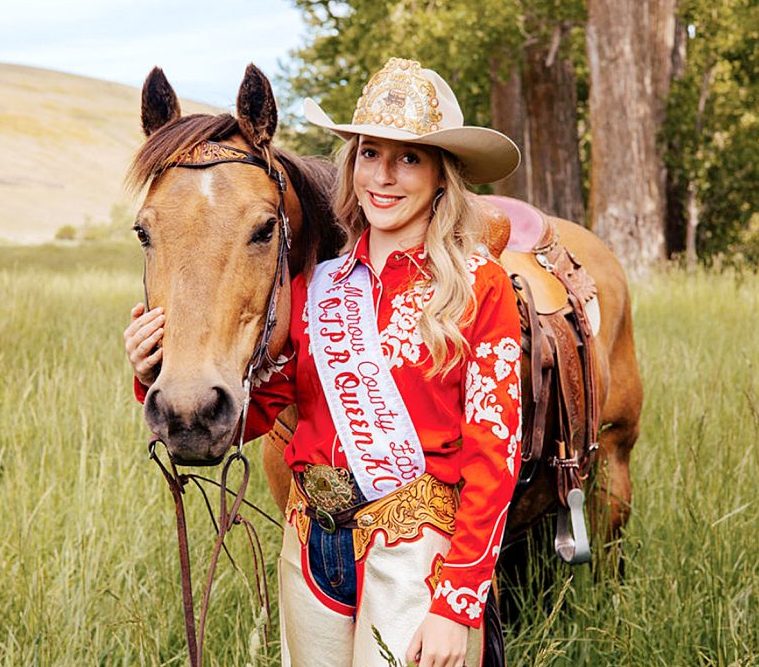SPECIAL REPORT: PNW hatcheries face rising costs, crumbling infrastructure
Published 6:00 am Sunday, July 13, 2025

- Conditions at Leavenworth National Fish Hatchery and similar facilities aren’t as glossy as publicity images suggest. (Nick Engelfried/Columbia Insight)
Hundreds of fins undulate beneath the surface in a walled pond next to Icicle Creek at Leavenworth National Fish Hatchery, a little more than 100 miles east of Seattle.
The fish, adult spring chinook salmon, lately completed a journey from the Pacific Ocean up the Columbia and Wenatchee Rivers to the stream in whose waters they were released as smolt.
These salmon will spend their last days here, until their eggs and milt are collected in August to give rise to the next generation of fish bred at the hatchery.
Trending
Their lifecycle, unfolding partly in rivers and the ocean, partly in the hatchery’s artificial setting, is a product of human decisions that altered watersheds throughout the Pacific Northwest such that robust salmon fisheries can no longer be sustained without intervention.
Signs of the industrial age abound around the hatchery on Icicle Creek, located just outside the picturesque town of Leavenworth in the North Cascades.
Some of the surrounding mountains are protected within the Alpine Lakes Wilderness Area, but others show evidence of industrial logging. Climate change has shrunk nearby glaciers and led to hotter, drier summers.
For commercial and recreational fishers, especially Indigenous nations with treaty-protected fishing rights, hatcheries like this one represent a guarantee that the U.S. government and Pacific Northwest states would shore up salmon populations to at least partially make up for the toll taken by dams and industrialization.
“We knew, even in the 1930s and ’40s when many dams were built, there were going to be major impacts on salmon,” says Zach Penney, director of strategic initiatives for the Columbia River Inter-tribal Fish Commission. “Each hatchery is meant to mitigate for a loss of fish production.”
Today, however, the promise of sustained fish yields is in danger of collapsing. This is due to a convergence of crises.
Trending
“We have three major things impacting hatcheries’ ability to operate: deferred maintenance costs, rising inflation and climate change,” says Shaun Clements, deputy director at the Oregon Department of Fish and Wildlife. “It’s gotten to where the budget under consideration by our state legislature this year proposes closing two hatcheries.”
While these intertwined challenges have been building for decades, the problems are exacerbated by federal spending cuts and layoffs under the Trump administration.
For some hatcheries, the strain could be too much to keep operating.
“This should be a bipartisan issue,” says Penney. “It doesn’t matter if you’re Democrat or Republican, people love fish. And, in the absence of bigger ecosystem fixes, hatcheries are a necessary fail safe for our fisheries.”
Imperfect solution
Every year, Leavenworth Fish Hatchery releases salmon smolt that must make it past no fewer than seven major dams on their way down the Columbia River to the Pacific Ocean. Bypass systems help them avoid each dam’s deadly turbines.
Even so, only around half make it to the ocean.
Those salmon that survive to adulthood in the ocean must navigate back up the same obstacle course to reach their natal stream.
Dams located between the mouth of the Columbia and the river’s confluence with the Wenatchee River are equipped with fish ladders that help adult salmon pass. However, farther up the Columbia sits a more impenetrable barrier: Grand Coulee Dam, a structure so massive no fish can get past it unassisted.
Grand Coulee’s construction was the main impetus for building the Leavenworth hatchery.
Since work on the hatchery finished in 1940, it has helped sustain spring chinook in the Columbia, despite hundreds of miles of lost spawning habitat.
Throughout the region, other hatcheries help compensate in similar manner for the impacts of Grand Coulee and other dams.
“Right now, hatcheries are the only things providing meaningful harvest not just for Tribes, but to commercial fisheries from Astoria all the way up into Idaho,” says Penney.
Hatcheries are far from a perfect substitute for natural spawning grounds. Hatchery fish tend to be less genetically fit than wild salmon.
Furthermore, while some hatchery programs are designed to assist with conservation, others focus on churning out as many fish as possible for commercial use.
Conservation groups worry over-reliance on hatcheries hurts wild fish stocks.
“Hatcheries get painted with a broad brush,” says Penney. “But the only reason there are still salmon in parts of the Columbia is hatcheries have been used to not just supplement, but restart certain runs.”
For now, and for better or worse, hatcheries are the tool the federal and state governments have chosen to keep Pacific Northwest fisheries afloat.
It’s a tool in danger of failing.
Rising costs, deferred maintenance
“Just like roads and bridges built around the same time, hatcheries that are decades old have finally started falling apart,” says Becky Johnson, production division director for the Nez Perce Tribe Department of Fisheries.
The Nez Perce run three hatcheries on the 75-mile-long Clearwater River in north-central Idaho, which feeds into the Snake River at the Idaho-Washington border.
Two, Dworshak and Kooskia National Hatcheries, were built in the 1960s and are old enough to need serious upgrades.
“We have pumps failing, pipes that need replacing, crumbling concrete,” says Johnson.
The 1927 construction of Lewiston Dam led to extirpation of coho salmon from the Clearwater, but in the 1990s the Nez Perce undertook a restoration effort aided by hatcheries.
Tribal members brought in young cohos bred elsewhere in the Columbia River Basin, reestablishing a stock that today includes wild-breeding fish.
Decades of insufficient federal support, however, have left facilities involved in this effort close to the breaking point.
Part of the problem is laws passed by Congress to fund hatchery programs, like the 1938 Mitchell Act, do not account for inflation.
“Federal funding has been basically flat-lined for over twenty years,” says Johnson. “Well, anyone knows a gallon of gas, for instance, costs a lot more now than two decades ago. But as the cost of operating hatcheries increases, the amount of money provided does not.”
Rising costs for basic operations means deferring long-term maintenance, right at a time when systems built last century are beginning to fail.
“If your budget stays the same, but the cost of feeding and transporting fish goes up every year, you have problems,” says Jeremy Five Crows, communications director for CRITFC and a Columbia Insight board member. “You’ll end up pulling from your maintenance fund, because it’s not like you have a choice whether or not to feed the fish.”
Similar issues plague state hatcheries, which rely on dwindling funds from legislatures.
Oregon’s Department of Fish and Wildlife estimates the cost of fish food increased over 20% between 2021 and 2023. This affects facilities throughout the Northwest.
“Our hatcheries face extensive infrastructure and maintenance challenges, primarily due to the advanced age of many,” says Kelly Hall, communications manager for the Washington Department of Fish and Wildlife.
Hall lists deteriorating buildings, water quality systems and fish incubation facilities among the issues needing attention.
In October, NOAA Fisheries and the Bureau of Indian Affairs announced $240 million from the Inflation Reduction Act would go toward funding tribal hatchery upgrades up and down the West Coast.
“It seems like a lot of money, and it is,” says Mike Matylewich, fisheries management director for CRITFC. “But it’s only a small fraction of what’s needed.”
Tribes and states have pegged the price tag for needed repairs at hatcheries across the Columbia River Basin, alone, at over a billion dollars.
With the Trump administration and Congressional Republicans clawing back federal spending, it’s unlikely significant new funds will be forthcoming soon.
Staffing cuts
Meanwhile, federal layoffs have left hatcheries with skeleton crews to manage the crumbling infrastructure.
“Caring for fish is a 24/7 job,” says Penney. “You can do that work with just one or two people for a while, but being understaffed for the long-term isn’t sustainable.”
At Leavenworth National Fish Hatchery, salmon are on site year-round. Young salmon spend a full year there before being released into the creek, and returning adults are held for months before spawning.
This means thousands of fish need to be fed and cared for every day.
A spokesperson for the U.S. Fish and Wildlife Service, which operates the Leavenworth hatchery, did not address the question directly when asked how staffing cuts and layoffs have affected operations.
The agency “remains dedicated to conserving America’s wildlife and natural habitats while promoting access, use, and enjoyment of public lands by the American people, all while upholding federal responsibilities with efficiency and accountability,” the spokesperson told Columbia Insight in an email. “Under President Trump’s leadership, we are prioritizing strategic reforms to maximize resources and enhance operational effectiveness.”
A hatchery employee, who will remain anonymous due to not being authorized to speak to the media, gave a less rosy picture. This employee said the three-facility complex in Washington that includes hatcheries in Leavenworth, Winthrop and Entiat has “lost some people to early retirement, and we can’t fill positions we’ve lost. The complex is about at half-staff.”
Other hatcheries are in similar straits.
“The Columbia Gorge Complex lost about half their staff,” says Matylewich of CRITFC, referring to six federal hatcheries in the lower Columbia River Basin. “Those facilities produce a significant number of the fish from the West Coast, and some now have just one or two full-time employees.”
Even hatcheries not directly staffed by the federal government, like those operated by the Nez Perce, have felt ripple effects from federal layoffs.
“People we would work and coordinate with at the Fish and Wildlife Service have been let go,” says Johnson. “It’s been tough.”
“If there isn’t going to be certainty that resources will be there to keep operating, fisheries will have to make hard choices about what fish they can continue to raise,” says Penney, of CRITFC. “It has a lot of people extremely concerned.”
So far, federal, state and tribal hatchery managers have been able to pull together resources to prevent the kind of catastrophic failure that would mean the loss of a generation of salmon from a major hatchery.
It’s unclear how long this can continue.
— Nick Engelfried is a freelance journalist based in Bellingham, Washington. He writes about environmental issues, climate politics and grassroots movements for social change.
— Columbia Insight, based in Hood River, is a nonprofit news site focused on environmental issues of the Columbia River Basin and the Pacific Northwest.









